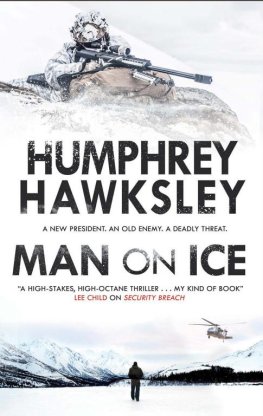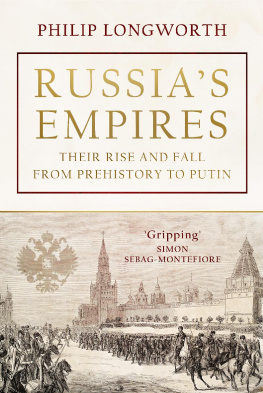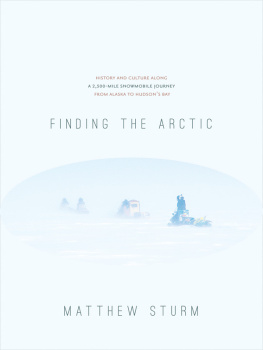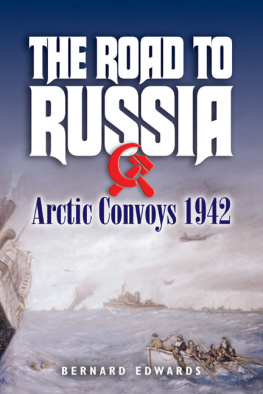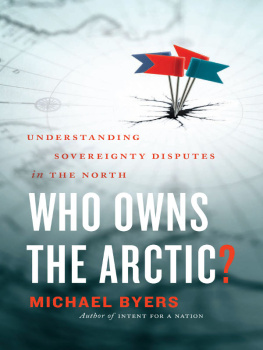F. X. Holden
Bering Strait
Bering Strait, August 2031
The iceberg had calved off the Arctic ice pack two years earlier. After wallowing for a while in the ocean off the coast it had been picked up by the transpolar current and then flung into the Beaufort Gyre, a swirling maelstrom of hurdy-gurdy waters that circulated between the East Siberian Sea and the Beaufort Sea off Alaska. Like a small child thrown off a playground carousel that was spinning too fast, it was dumped into the mouth of the Bering Strait, slowing but moving inexorably south at a stately two to three knots.
The violence of its birth and the impact of wind and tides had seen its original tabular shape worn away until just a thin sliver of a dome remained above the water. Below the water, 200 tons of ice and trapped rock served as both ballast and rudder, driving the berg forward. At 800 feet long, it was at least twice the size of the iceberg that sank the Titanic.
And it was headed straight toward the Russian container vessel Ozempic Tsar!
The bridge of the Ozempic Tsar was silent. Under a panel of windows with a 360-degree view of the sparkling sea around it, a bank of screens and instruments flashed and blinked. Two doors, one to port, and one to starboard, let out to an over-bridge watch station in which sat Ozempic Line Maritime Apprentice, Fyodor Leonov. He was taking the approach of the huge iceberg very calmly.
The Tsar was outfitted with the latest in subsea sonar and high-frequency radar for detecting both shipping and subsurface objects, and as it bore down on the iceberg at a combined closing speed of 18 knots, the sonar was the first to react. A collision warning alarm began to sound throughout the ship, but there was no panicked shouting, no thud of feet running on steel decks.
The AI controlling the X-band 10Ghz radar directed the beam toward the suspected location of the iceberg, but saw nothing. Indecision might have paralyzed a human captain, but the Ozempic Tsar had no such problems. Confirming that the sea lane to starboard was clear of other traffic, the massive container ship feathered its starboard screw, punched in portside bow impellers, dialed its speed back to 10 knots and began a grindingly slow, skidding turn to starboard. It was helped by the fact it was carrying a bulky but lightweight cargo for this journey, but without perfect information about the speed and bearing of the iceberg, its computers calculated a ten percent chance that the ship would not clear the object ahead of it in time.
A new alarm began to sound throughout the ship, warning the six-person crew of mostly security personnel to get to emergency stations and brace for impact. Leonov stayed seated, and no one else responded. There was no sign of panic either above, or below decks.
Slowly, the bows of the supertanker swung around, and the ships radar was able to pick up a return from the dome of ice that was riding above sea level. Now the AI could use two inputs, the radar and sonar, to calculate the position, speed and bearing of the iceberg and it revised its estimate of the likelihood of collision to zero. Immediately it began replotting a track to get itself back on course once the iceberg was passed. As the iceberg slid along the Tsars port side, a comfortable two miles away, the ship sent a warning message about the berg to both the Russian and US Coast Guard channels, giving its position, speed and likely heading given prevailing currents. And then it canceled the blare of klaxons ringing out over its empty decks.
Pimple faced and ruddy cheeked, Apprentice Fyodor Leonov was from a long line of merchant sailors, and distantly descended from Captain Viktor Nikolayevitch Leonov, a two time Hero of the Soviet Union. Steely nerves were hard coded into his salty DNA, even though at 19, he was the youngest among the small crew. Entering the Maritime Academy he had been desperate to prove himself to his fisherman father, and hadnt been able to believe his luck when he was told his first seagoing assignment was going to be aboard the most advanced container ship in the entire world! He had spent most of the first day of the voyage just thinking about the look of pride in his fathers eyes as hed waved goodbye to Fyodor and his ship in Anadyr.
The Ozempic Tsar was proof that the future of merchant shipping was autonomous. The fourth of its kind in the Ozempic Imperial Line it was first to make the polar voyage from Archangelsk in Russia to Hokkaido in Japan completely unmanned. As its name implied, the Tsar was very much a king of the seas.
It had a capacity of 400,000 deadweight tons and had sailed with a consignment of powdered lithium from a dialysis plant in Anadyr. It was 300 feet long and four stories high, steered not by a shore-based human helmsman like its remotely piloted sister ships, but by a Norwegian-designed AI core that managed both navigation and systems overwatch.
The crew aboard the Ozempic Star were mostly there to deter hijackers, but there was no way to pilot the ship or alter its course if the ship was boarded at sea, and the engine room, cargo and fuel supply were completely sealed against intruders. Young Leonov had been given basic training in how to repel pirates using the ships anti-boarding defenses, and in the unlikely event pirates made it aboard, how to secure himself deep in the bowels of the ship inside its invulnerable panic room. Not that pirates were a big problem in the Arctic seas yet, but a fully laden supertanker with absolutely no crew to guard it would have been a tempting prize if precautions hadnt been taken.
The Ozempic Tsar was a 250-million-dollar miracle of progress in the field of self-piloted freighters and proof that the Russian oil oligarchs who built her had shown amazing foresight in realizing that global warming could be an upside business opportunity if it meant a permanent polar freight route could be opened as the Arctic ice cap melted. They had a dream that they could take Anadyr from a small local container port to the biggest port in the Russian Far East in coming years, shipping the riches of the Chukotka gold, copper and lithium mining region to markets on the East Coast of America and beyond, whose demand for the raw materials for batteries to supplement its renewable energy obsession was insatiable.
The Tsar also held the world record for the Anadyr New York transit, completing the 3,000 km trip in 16 days, requiring as it did, little time in port for crew rest or replenishment, and taking its fuel from the sea as it sailed, using solar and wind-powered catalytic converters to turn the seawater into hydrogen for its engines. Taking the northern sea route also shaved nearly two weeks off the trip from the container terminal at Anadyr, which otherwise would have had to go via the Panama Canal.
Up in his watch station, his head turned toward the iceberg now sliding past the Ozempic Tsars port bow, Apprentice Fyodor Leonov could have been forgiven a moment of pride. Feeling his ship slice through the slight swell of a brisk, sunlit summer in the Strait, thinking nothing in the world could stop it!
Unfortunately, Apprentice Leonov wasnt really capable of thinking at all, because like the other five members of his crew, he was dead, and didnt really care anymore about what a magnificent ship the Ozempic Tsar was.
And he cared just as little when two AGM-158C PIKE anti-ship missiles appeared on the horizon, tails streaming liquid fire, and then buried themselves deep in the Tsars guts before they detonated their 1,000lb blast-fragmentation warheads.
After which the still unimpressed Apprentice Leonov set his own world record, for the fastest trip to the bottom of the Bering Strait on an autonomous pilotless freighter.



